Yi Zhu
rStar2-Agent: Agentic Reasoning Technical Report
Aug 28, 2025Abstract:We introduce rStar2-Agent, a 14B math reasoning model trained with agentic reinforcement learning to achieve frontier-level performance. Beyond current long CoT, the model demonstrates advanced cognitive behaviors, such as thinking carefully before using Python coding tools and reflecting on code execution feedback to autonomously explore, verify, and refine intermediate steps in complex problem-solving. This capability is enabled through three key innovations that makes agentic RL effective at scale: (i) an efficient RL infrastructure with a reliable Python code environment that supports high-throughput execution and mitigates the high rollout costs, enabling training on limited GPU resources (64 MI300X GPUs); (ii) GRPO-RoC, an agentic RL algorithm with a Resample-on-Correct rollout strategy that addresses the inherent environment noises from coding tools, allowing the model to reason more effectively in a code environment; (iii) An efficient agent training recipe that starts with non-reasoning SFT and progresses through multi-RL stages, yielding advanced cognitive abilities with minimal compute cost. To this end, rStar2-Agent boosts a pre-trained 14B model to state of the art in only 510 RL steps within one week, achieving average pass@1 scores of 80.6% on AIME24 and 69.8% on AIME25, surpassing DeepSeek-R1 (671B) with significantly shorter responses. Beyond mathematics, rStar2-Agent-14B also demonstrates strong generalization to alignment, scientific reasoning, and agentic tool-use tasks. Code and training recipes are available at https://github.com/microsoft/rStar.
VibeVoice Technical Report
Aug 26, 2025Abstract:This report presents VibeVoice, a novel model designed to synthesize long-form speech with multiple speakers by employing next-token diffusion, which is a unified method for modeling continuous data by autoregressively generating latent vectors via diffusion. To enable this, we introduce a novel continuous speech tokenizer that, when compared to the popular Encodec model, improves data compression by 80 times while maintaining comparable performance. The tokenizer effectively preserves audio fidelity while significantly boosting computational efficiency for processing long sequences. Thus, VibeVoice can synthesize long-form speech for up to 90 minutes (in a 64K context window length) with a maximum of 4 speakers, capturing the authentic conversational ``vibe'' and surpassing open-source and proprietary dialogue models.
Enabling Self-Improving Agents to Learn at Test Time With Human-In-The-Loop Guidance
Jul 23, 2025Abstract:Large language model (LLM) agents often struggle in environments where rules and required domain knowledge frequently change, such as regulatory compliance and user risk screening. Current approaches, like offline fine-tuning and standard prompting, are insufficient because they cannot effectively adapt to new knowledge during actual operation. To address this limitation, we propose the Adaptive Reflective Interactive Agent (ARIA), an LLM agent framework designed specifically to continuously learn updated domain knowledge at test time. ARIA assesses its own uncertainty through structured self-dialogue, proactively identifying knowledge gaps and requesting targeted explanations or corrections from human experts. It then systematically updates an internal, timestamped knowledge repository with provided human guidance, detecting and resolving conflicting or outdated knowledge through comparisons and clarification queries. We evaluate ARIA on the realistic customer due diligence name screening task on TikTok Pay, alongside publicly available dynamic knowledge tasks. Results demonstrate significant improvements in adaptability and accuracy compared to baselines using standard offline fine-tuning and existing self-improving agents. ARIA is deployed within TikTok Pay serving over 150 million monthly active users, confirming its practicality and effectiveness for operational use in rapidly evolving environments.
Enhancing Efficiency and Propulsion in Bio-mimetic Robotic Fish through End-to-End Deep Reinforcement Learning
Jun 05, 2025Abstract:Aquatic organisms are known for their ability to generate efficient propulsion with low energy expenditure. While existing research has sought to leverage bio-inspired structures to reduce energy costs in underwater robotics, the crucial role of control policies in enhancing efficiency has often been overlooked. In this study, we optimize the motion of a bio-mimetic robotic fish using deep reinforcement learning (DRL) to maximize propulsion efficiency and minimize energy consumption. Our novel DRL approach incorporates extended pressure perception, a transformer model processing sequences of observations, and a policy transfer scheme. Notably, significantly improved training stability and speed within our approach allow for end-to-end training of the robotic fish. This enables agiler responses to hydrodynamic environments and possesses greater optimization potential compared to pre-defined motion pattern controls. Our experiments are conducted on a serially connected rigid robotic fish in a free stream with a Reynolds number of 6000 using computational fluid dynamics (CFD) simulations. The DRL-trained policies yield impressive results, demonstrating both high efficiency and propulsion. The policies also showcase the agent's embodiment, skillfully utilizing its body structure and engaging with surrounding fluid dynamics, as revealed through flow analysis. This study provides valuable insights into the bio-mimetic underwater robots optimization through DRL training, capitalizing on their structural advantages, and ultimately contributing to more efficient underwater propulsion systems.
Chinese Cyberbullying Detection: Dataset, Method, and Validation
May 27, 2025Abstract:Existing cyberbullying detection benchmarks were organized by the polarity of speech, such as "offensive" and "non-offensive", which were essentially hate speech detection. However, in the real world, cyberbullying often attracted widespread social attention through incidents. To address this problem, we propose a novel annotation method to construct a cyberbullying dataset that organized by incidents. The constructed CHNCI is the first Chinese cyberbullying incident detection dataset, which consists of 220,676 comments in 91 incidents. Specifically, we first combine three cyberbullying detection methods based on explanations generation as an ensemble method to generate the pseudo labels, and then let human annotators judge these labels. Then we propose the evaluation criteria for validating whether it constitutes a cyberbullying incident. Experimental results demonstrate that the constructed dataset can be a benchmark for the tasks of cyberbullying detection and incident prediction. To the best of our knowledge, this is the first study for the Chinese cyberbullying incident detection task.
rStar-Coder: Scaling Competitive Code Reasoning with a Large-Scale Verified Dataset
May 27, 2025Abstract:Advancing code reasoning in large language models (LLMs) is fundamentally limited by the scarcity of high-difficulty datasets, especially those with verifiable input-output test cases necessary for rigorous solution validation at scale. We introduce rStar-Coder, which significantly improves LLM code reasoning capabilities by constructing a large-scale, verified dataset of 418K competition-level code problems, 580K long-reasoning solutions along with rich test cases of varying difficulty. This is achieved through three core contributions: (1) we curate competitive programming code problems and oracle solutions to synthesize new, solvable problems; (2) we introduce a reliable input-output test case synthesis pipeline that decouples the generation into a three-step input generation method and a mutual verification mechanism for effective output labeling; (3) we augment problems with high-quality, test-case-verified long-reasoning solutions. Extensive experiments on Qwen models (1.5B-14B) across various code reasoning benchmarks demonstrate the superiority of rStar-Coder dataset, achieving leading performance comparable to frontier reasoning LLMs with much smaller model sizes. On LiveCodeBench, rStar-Coder improves Qwen2.5-7B from 17.4% to an impressive 57.3%, and Qwen2.5-14B from 23.3% to 62.5%, surpassing o3-mini (low) by3.1%. On the more challenging USA Computing Olympiad, our 7B model achieves an average pass@1 accuracy of 16.15%, outperforming the frontier-level QWQ-32B. Code and the dataset will be released at https://github.com/microsoft/rStar.
DGRO: Enhancing LLM Reasoning via Exploration-Exploitation Control and Reward Variance Management
May 19, 2025

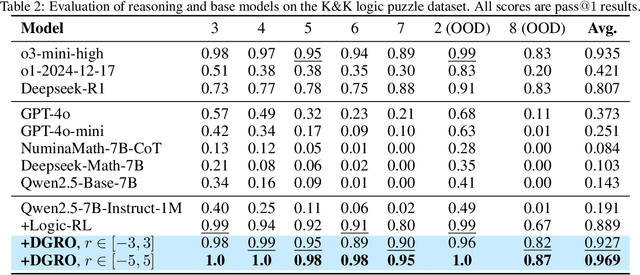

Abstract:Inference scaling further accelerates Large Language Models (LLMs) toward Artificial General Intelligence (AGI), with large-scale Reinforcement Learning (RL) to unleash long Chain-of-Thought reasoning. Most contemporary reasoning approaches usually rely on handcrafted rule-based reward functions. However, the tarde-offs of exploration and exploitation in RL algorithms involves multiple complex considerations, and the theoretical and empirical impacts of manually designed reward functions remain insufficiently explored. In this paper, we propose Decoupled Group Reward Optimization (DGRO), a general RL algorithm for LLM reasoning. On the one hand, DGRO decouples the traditional regularization coefficient into two independent hyperparameters: one scales the policy gradient term, and the other regulates the distance from the sampling policy. This decoupling not only enables precise control over balancing exploration and exploitation, but also can be seamlessly extended to Online Policy Mirror Descent (OPMD) algorithms in Kimi k1.5 and Direct Reward Optimization. On the other hand, we observe that reward variance significantly affects both convergence speed and final model performance. We conduct both theoretical analysis and extensive empirical validation to assess DGRO, including a detailed ablation study that investigates its performance and optimization dynamics. Experimental results show that DGRO achieves state-of-the-art performance on the Logic dataset with an average accuracy of 96.9\%, and demonstrates strong generalization across mathematical benchmarks.
CAP-Net: A Unified Network for 6D Pose and Size Estimation of Categorical Articulated Parts from a Single RGB-D Image
Apr 15, 2025Abstract:This paper tackles category-level pose estimation of articulated objects in robotic manipulation tasks and introduces a new benchmark dataset. While recent methods estimate part poses and sizes at the category level, they often rely on geometric cues and complex multi-stage pipelines that first segment parts from the point cloud, followed by Normalized Part Coordinate Space (NPCS) estimation for 6D poses. These approaches overlook dense semantic cues from RGB images, leading to suboptimal accuracy, particularly for objects with small parts. To address these limitations, we propose a single-stage Network, CAP-Net, for estimating the 6D poses and sizes of Categorical Articulated Parts. This method combines RGB-D features to generate instance segmentation and NPCS representations for each part in an end-to-end manner. CAP-Net uses a unified network to simultaneously predict point-wise class labels, centroid offsets, and NPCS maps. A clustering algorithm then groups points of the same predicted class based on their estimated centroid distances to isolate each part. Finally, the NPCS region of each part is aligned with the point cloud to recover its final pose and size. To bridge the sim-to-real domain gap, we introduce the RGBD-Art dataset, the largest RGB-D articulated dataset to date, featuring photorealistic RGB images and depth noise simulated from real sensors. Experimental evaluations on the RGBD-Art dataset demonstrate that our method significantly outperforms the state-of-the-art approach. Real-world deployments of our model in robotic tasks underscore its robustness and exceptional sim-to-real transfer capabilities, confirming its substantial practical utility. Our dataset, code and pre-trained models are available on the project page.
Potential Score Matching: Debiasing Molecular Structure Sampling with Potential Energy Guidance
Mar 18, 2025Abstract:The ensemble average of physical properties of molecules is closely related to the distribution of molecular conformations, and sampling such distributions is a fundamental challenge in physics and chemistry. Traditional methods like molecular dynamics (MD) simulations and Markov chain Monte Carlo (MCMC) sampling are commonly used but can be time-consuming and costly. Recently, diffusion models have emerged as efficient alternatives by learning the distribution of training data. Obtaining an unbiased target distribution is still an expensive task, primarily because it requires satisfying ergodicity. To tackle these challenges, we propose Potential Score Matching (PSM), an approach that utilizes the potential energy gradient to guide generative models. PSM does not require exact energy functions and can debias sample distributions even when trained on limited and biased data. Our method outperforms existing state-of-the-art (SOTA) models on the Lennard-Jones (LJ) potential, a commonly used toy model. Furthermore, we extend the evaluation of PSM to high-dimensional problems using the MD17 and MD22 datasets. The results demonstrate that molecular distributions generated by PSM more closely approximate the Boltzmann distribution compared to traditional diffusion models.
Redefining Simplicity: Benchmarking Large Language Models from Lexical to Document Simplification
Feb 12, 2025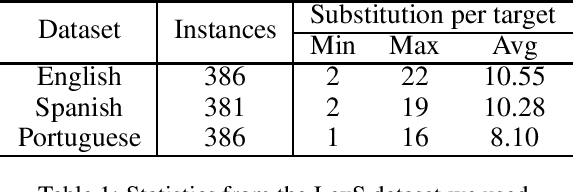
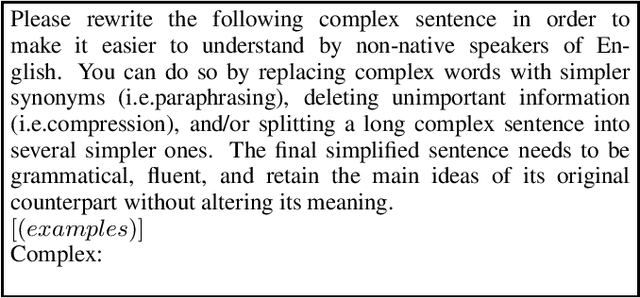
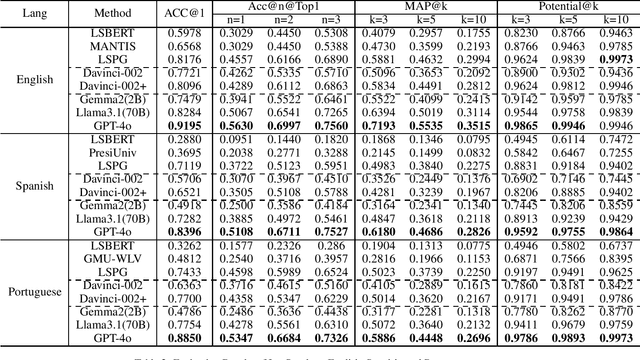
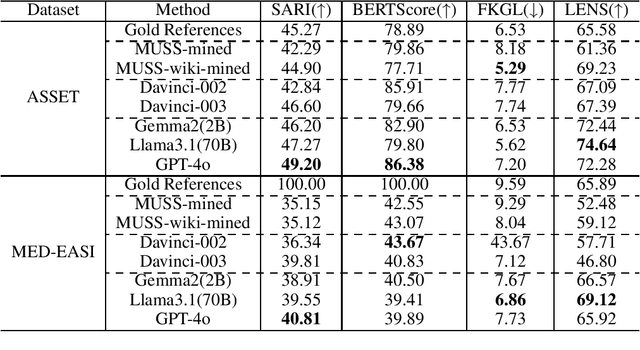
Abstract:Text simplification (TS) refers to the process of reducing the complexity of a text while retaining its original meaning and key information. Existing work only shows that large language models (LLMs) have outperformed supervised non-LLM-based methods on sentence simplification. This study offers the first comprehensive analysis of LLM performance across four TS tasks: lexical, syntactic, sentence, and document simplification. We compare lightweight, closed-source and open-source LLMs against traditional non-LLM methods using automatic metrics and human evaluations. Our experiments reveal that LLMs not only outperform non-LLM approaches in all four tasks but also often generate outputs that exceed the quality of existing human-annotated references. Finally, we present some future directions of TS in the era of LLMs.
 Add to Chrome
Add to Chrome Add to Firefox
Add to Firefox Add to Edge
Add to Edge